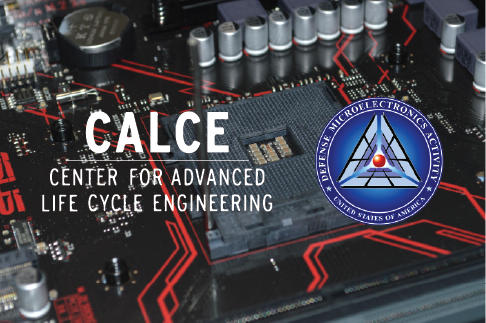News Story
Using Machine-Vision Technologies for Counterfeit Detection

The Defense Microelectronics Activity (DMEA) was tasked under Section 843 of the 2019 National Defense Authorization Act (NDAA) with coordinating the establishment of a Pilot Program to test Machine-Vision Technologies in the field of counterfeit microelectronic detection. DMEA has awarded CALCE two contracts (PI Dr. Michael Azarian and co-PI Dr. Diganta Das) to assess the effectiveness of machine-vision technologies for detecting counterfeit microelectronics used by the US Department of Defense (DoD). Under a project entitled “Microelectronic Authenticity and Security, Evaluation and Research” (MASER), CALCE will lead a blind round-robin test effort to evaluate newly developed as well as conventional methods for counterfeit detection. CALCE will also assess the application of machine-vision methods currently employed for other purposes to counterfeit detection; evaluate the technical maturity of new detection methods; and recommend solutions to improve the integrity of the supply chain for integrated circuits. SMT Corporation of Sandy Hook, CT is working closely with CALCE on this project as a partner.
Machine-vision detection technology includes systems that leverage side-channels (also known as second-order effects) and/or machine learning algorithms to assess the authenticity of a microelectronic device. CALCE will also determine the technology readiness levels (TRL) of several such tools to help the government and industry select the most effective and practical technologies. The report will be presented by DMEA to the US Congress as part of the mandate.
 To assess the legal landscape, CALCE has teamed with the University of Maryland Carey School of Law, in an effort led by Prof. Patricia Campbellunder the project entitled “Section 843 Pilot Program Report Generation and Policy Analysis,” to review current applicable laws, regulations, and policies regarding the mitigation of counterfeit electronics. This research will focus on laws and policies that support or hinder the development of anti-counterfeit solutions, and recommend new laws and regulations that can promote the adoption of effective practices and tools to mitigate the counterfeit threat.
To assess the legal landscape, CALCE has teamed with the University of Maryland Carey School of Law, in an effort led by Prof. Patricia Campbellunder the project entitled “Section 843 Pilot Program Report Generation and Policy Analysis,” to review current applicable laws, regulations, and policies regarding the mitigation of counterfeit electronics. This research will focus on laws and policies that support or hinder the development of anti-counterfeit solutions, and recommend new laws and regulations that can promote the adoption of effective practices and tools to mitigate the counterfeit threat.
For more information, contact Dr. Michael Azarian or Dr. Diganta Das.
Published February 26, 2020




